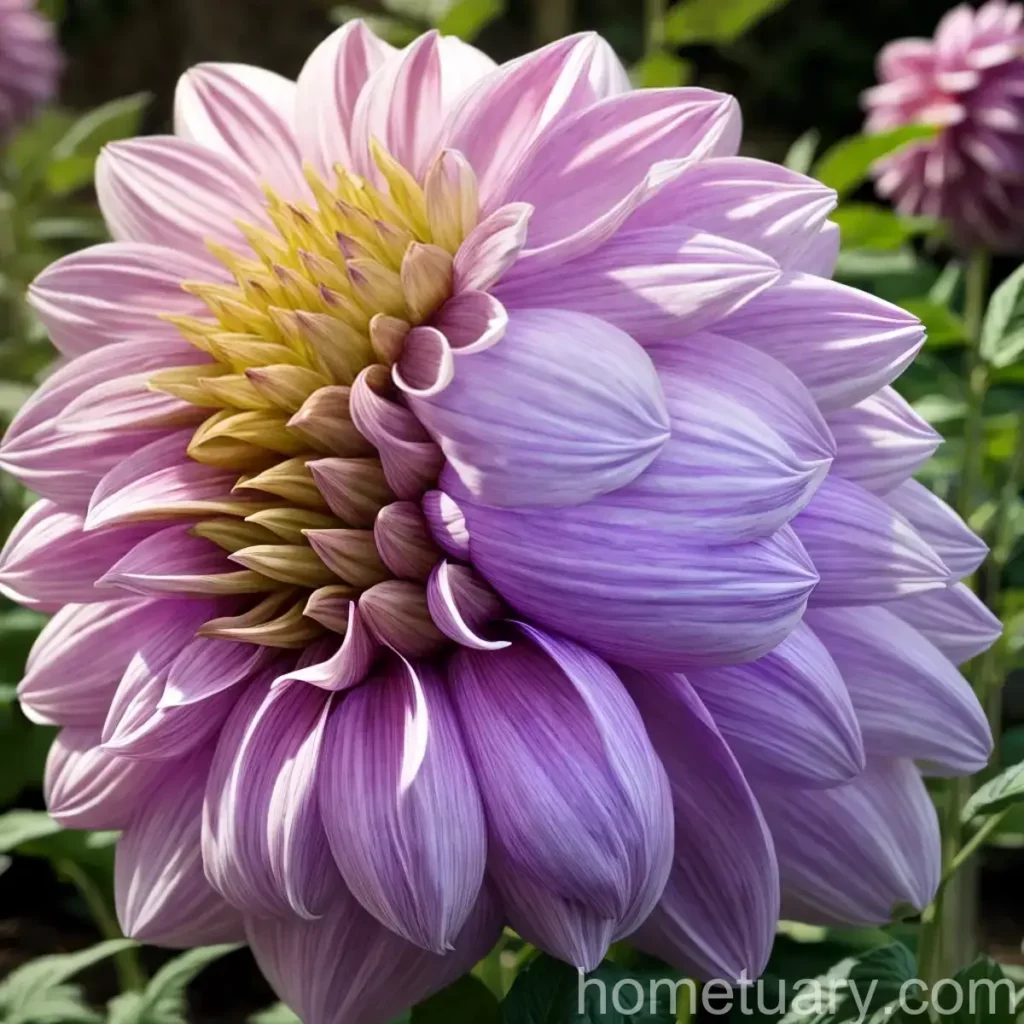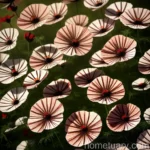Dahlia ‘Lavender Chiffon’: A Complete Guide to Growing and Caring for This Beautiful Plant
Introduction to Dahlia ‘Lavender Chiffon’
Dahlia ‘Lavender Chiffon’ is a stunning and popular variety of dahlia, known for its delicate and intricate flowers. It belongs to the plant genus Dahlia, which is a diverse and extensive group of flowering plants native to the highlands and mountains of Mexico, Central America, and Colombia. The ‘Lavender Chiffon’ cultivar is prized for its unique lavender-colored blooms, and it is a favorite among gardeners and floral enthusiasts alike.
Key Takeaways – Dahlia ‘Lavender Chiffon’
- Care: Proper care is essential for the successful growth and blooming of Dahlia ‘Lavender Chiffon’.
- Growing: Understanding the specific growing requirements of this cultivar is crucial for its cultivation.
- Cultivation: Knowing how to cultivate and maintain Dahlia ‘Lavender Chiffon’ ensures its health and vitality.
- Planting Tips: Following specific planting tips can improve the success rate of growing Dahlia ‘Lavender Chiffon’.
- Pruning: Pruning techniques tailored to this variety can enhance its overall appearance and health.
In this comprehensive guide, we will explore the various aspects of growing and caring for Dahlia ‘Lavender Chiffon,’ including its cultural needs, uses, water and sunlight requirements, fertilizer, soil preferences, pruning techniques, propagation methods, common diseases, pest control, and much more.
Culture
Understanding the cultural requirements of Dahlia ‘Lavender Chiffon’ is fundamental to its successful growth and development. This encompasses a wide range of factors, including its native habitat, preferred climate, and specific environmental needs.
Native Habitat and Climate
Dahlias, including the ‘Lavender Chiffon’ variety, are native to the highlands and mountains of Mexico, Central America, and Colombia. These regions provide important insights into the plants’ ideal climatic conditions.
-
Growing Zones: Dahlia ‘Lavender Chiffon’ thrives in USDA hardiness zones 8-11, although it can be grown in colder climates if overwintered properly.
-
Temperature: These plants prefer moderate temperatures, typically thriving in the range of 60-70°F (15-21°C).
-
Frost Sensitivity: While Dahlia ‘Lavender Chiffon’ cannot withstand frost, it can be overwintered in colder regions with appropriate care.
Uses
Dahlia ‘Lavender Chiffon’ has several uses in the gardening and floral industries, owing to its unique characteristics:
-
Ornamental Purposes: The striking lavender-hued blooms make Dahlia ‘Lavender Chiffon’ a favorite choice for ornamental gardens, landscapes, and floral arrangements.
-
Cut Flowers: The flowers of this variety are often used in cut flower arrangements and bouquets due to their vibrant color and long vase life.
-
Pollinator Attraction: The nectar-rich flowers of Dahlia ‘Lavender Chiffon’ attract pollinators such as bees and butterflies, making it a valuable addition to pollinator-friendly gardens.
Water
Proper watering is essential for the health and vigor of Dahlia ‘Lavender Chiffon.’ Understanding its water requirements and implementing appropriate watering practices can contribute to its overall well-being.
-
Watering Frequency: Dahlia ‘Lavender Chiffon’ generally requires regular watering, especially during dry periods. A deep watering once or twice a week is usually sufficient, ensuring that the soil remains evenly moist but not waterlogged.
-
Soil Moisture: It is important to maintain consistent soil moisture, particularly during the active growing season when the plant is producing new foliage and flowers.
-
Water Quality: Using good quality water, free from contaminants and excessive salts, is beneficial for Dahlia ‘Lavender Chiffon.’
Sunlight
Adequate sunlight is crucial for the growth and blooming of Dahlia ‘Lavender Chiffon.’ Understanding its sunlight requirements and providing the appropriate light conditions are key to its overall health.
-
Sun Exposure: This variety thrives in full sun, requiring at least 6-8 hours of direct sunlight daily for optimal growth and prolific flowering.
-
Shade Tolerance: While Dahlia ‘Lavender Chiffon’ prefers full sun, it can tolerate some light afternoon shade, especially in hot climates.
-
Light Intensity: Providing bright, direct sunlight is essential for promoting robust growth and vibrant flower coloration in this cultivar.
Fertilizer
Proper fertilization is essential for providing Dahlia ‘Lavender Chiffon’ with the necessary nutrients for vigorous growth and abundant flowering. Understanding its fertilizer requirements and implementing a suitable feeding regimen is vital for its overall health.
-
Nutrient Needs: This variety benefits from a balanced fertilizer formulation with a higher phosphorus content to promote flower production.
-
Application Timing: Fertilize Dahlia ‘Lavender Chiffon’ in early spring as new growth emerges, and continue with regular applications every 4-6 weeks during the growing season.
-
Organic Amendments: Incorporating organic matter such as compost or well-rotted manure into the soil before planting can provide a slow-release nutrient source for the plant.
Soil
The soil composition and quality significantly impact the growth and vitality of Dahlia ‘Lavender Chiffon.’ Understanding its soil preferences and ensuring proper soil conditions are crucial for its successful cultivation.
-
Well-Draining Soil: This variety thrives in well-draining, loamy soil that prevents waterlogging and root rot.
-
Soil pH: Dahlia ‘Lavender Chiffon’ prefers a slightly acidic to neutral soil pH in the range of 6.0-7.0 for optimal nutrient uptake.
-
Soil Amendments: Amending the soil with organic matter such as compost, peat moss, or well-rotted manure can improve its structure and fertility, providing an ideal growing medium for the plant.
Pruning
Pruning is an essential cultural practice for maintaining the health, shape, and blooming potential of Dahlia ‘Lavender Chiffon.’ Understanding the pruning needs of this cultivar and employing appropriate techniques can enhance its overall appearance and floral display.
-
Deadheading: Regularly removing spent flowers (deadheading) encourages continuous blooming and prevents the plant from channeling energy into seed production.
-
Pinching: Pinching or cutting back the growing tips of young Dahlia ‘Lavender Chiffon’ plants can promote bushier growth and more flower buds.
-
Winter Pruning: In colder climates, pruning the plants down to a few inches above the soil level in late fall or early winter before the first frost is crucial for overwintering.
Propagation
Propagation methods allow for the multiplication and preservation of Dahlia ‘Lavender Chiffon’ plants, enabling gardeners to expand their collections or share these beautiful specimens with others.
-
Division: Dividing established clumps of Dahlia ‘Lavender Chiffon’ in early spring before new growth begins is a common method of propagation. Each division should have viable eyes (growing points) and healthy tuber sections.
-
Cuttings: Propagating from stem cuttings, particularly from actively growing shoots, can be a successful way to produce new plants with identical characteristics to the parent plant.
-
Seed Propagation: While possible, propagating Dahlia ‘Lavender Chiffon’ from seeds is less common due to the variability in traits among seed-grown plants. It is primarily used for breeding new cultivars.
Container Popularity
Dahlia ‘Lavender Chiffon’ is a popular choice for container gardening, offering versatility, vibrant blooms, and the ability to thrive in confined spaces.
-
Container Size: When growing in containers, select a pot or container that provides ample room for the plant’s growth, with a diameter of at least 12-18 inches for established tubers.
-
Drainage: Proper drainage is crucial in container cultivation to prevent waterlogged soil, which can lead to root rot. Ensure that the containers have drainage holes at the bottom.
-
Potting Mix: Use a well-draining potting mix enriched with organic matter to provide nutrients and support healthy growth.
Common Diseases
Dahlia ‘Lavender Chiffon’ is susceptible to certain diseases that can impact its health and vitality. Understanding these common ailments and implementing disease prevention measures is crucial for the plant’s well-being.
| Disease | Symptoms | Management |
|---|---|---|
| Powdery Mildew | White powdery spots on leaves and stems | Improve air circulation, fungicidal sprays |
| Botrytis Blight | Gray mold on flowers, buds, and leaves | Remove affected plant parts, improve drainage |
| Fusarium Wilt | Yellowing and wilting of leaves, stunted growth | Avoid overhead watering, improve soil drainage |
| Aster Yellows | Yellowing and deformation of leaves, stunted growth | Remove and destroy infected plants |
Disease Diagnosis
Diagnosing diseases in Dahlia ‘Lavender Chiffon’ involves careful observation of symptoms and, when necessary, seeking professional assistance for accurate identification and management.
-
Leaf Symptoms: Look for any spots, discoloration, or abnormalities on the leaves, which can indicate fungal or bacterial infections.
-
Flower Abnormalities: Monitor the flowers for any unusual discoloration, wilting, or mold growth, which can be indicative of specific diseases.
-
Consulting Experts: If uncertain about a particular disease or symptom, seek advice from local horticultural extension services or master gardeners for accurate diagnosis and treatment recommendations.
Common Pests
Several pests can potentially affect Dahlia ‘Lavender Chiffon,’ causing damage to the foliage, buds, and flowers. Being aware of these common pests and implementing targeted pest control measures can help protect the plants.
-
Aphids: These small, soft-bodied insects can cluster on new growth and flower buds, causing distortion and stunted growth.
-
Spider Mites: These minute arachnids can cause stippling on the leaves and fine webbing, particularly in dry and hot conditions.
-
Thrips: Thrips can cause silvery streaks on the flowers and leaves, leading to aesthetic damage and potential flower bud damage.
-
Slugs and Snails: These mollusks can feed on the foliage and flowers, causing unsightly holes and damage.
-
Caterpillars: Certain caterpillar species may feed on the foliage and flower buds, leading to defoliation and reduced flowering.
Botanist’s Tips
Insights from botanists and experienced growers can provide valuable guidance for successfully growing and caring for Dahlia ‘Lavender Chiffon.’
-
Soil Preparation: Take the time to prepare the soil thoroughly before planting, incorporating organic matter and ensuring good drainage.
-
Deadheading: Regular deadheading not only enhances the appearance of the plant but also encourages continuous flowering throughout the season.
-
Overwintering: In colder climates, proper overwintering practices, such as lifting the tubers and storing them in a cool, dry location, are critical for preserving the plants for the next season.
Fun Facts
Delightful and intriguing facts about Dahlia ‘Lavender Chiffon’ can captivate and inspire both novice and seasoned gardeners:
-
Historical Significance: Dahlias were named after Swedish botanist Anders Dahl and have a rich history dating back to their introduction from Mexico to Europe in the late 18th century.
-
Floral Diversity: The dahlia genus boasts an astonishing array of flower forms and colors, ranging from delicate single blooms to massive, intricately layered flowers.
-
Cultural Significance: In the language of flowers, dahlias symbolize elegance, inner strength, creativity, and the celebration of life’s simple pleasures.
-
Breeding Advancements: Ongoing breeding efforts continue to enrich the dahlia market, introducing new varieties with unique colors, forms, and characteristics, including the beloved ‘Lavender Chiffon’ cultivar.
Links to External Resources
For further information and resources on Dahlia ‘Lavender Chiffon’ care, cultivation, and related topics, explore the following links:
-
American Dahlia Society: The official organization providing comprehensive information on dahlias, including cultivation tips, show schedules, and resources for enthusiasts.
-
Royal Horticultural Society – Growing Dahlias: The Royal Horticultural Society offers valuable guidance on growing dahlias, including planting, care, and dividing techniques.
-
University of Florida – Dahlia Culture for Florida Gardens: This resource presents detailed information on dahlia culture specifically tailored to Florida’s growing conditions, including pest and disease management.
-
North Carolina State University Extension – Dahlia Diseases: Learn about common diseases affecting dahlias and how to identify and manage them effectively.
-
Dahlia ‘Lavender Chiffon’ – Gardening Forums: Engage with fellow gardeners and enthusiasts to share experiences and gain insights on growing and caring for ‘Lavender Chiffon’ dahlias.
As we delve into the world of Dahlia ‘Lavender Chiffon,’ it becomes clear that this captivating plant offers much to discover and appreciate. From its stunning blooms to its cultural significance, the journey of growing and caring for this remarkable variety is filled with rewards and possibilities. By understanding its specific requirements and adopting best practices, gardeners can nurture thriving ‘Lavender Chiffon’ dahlias that continue to enchant and inspire season after season.















